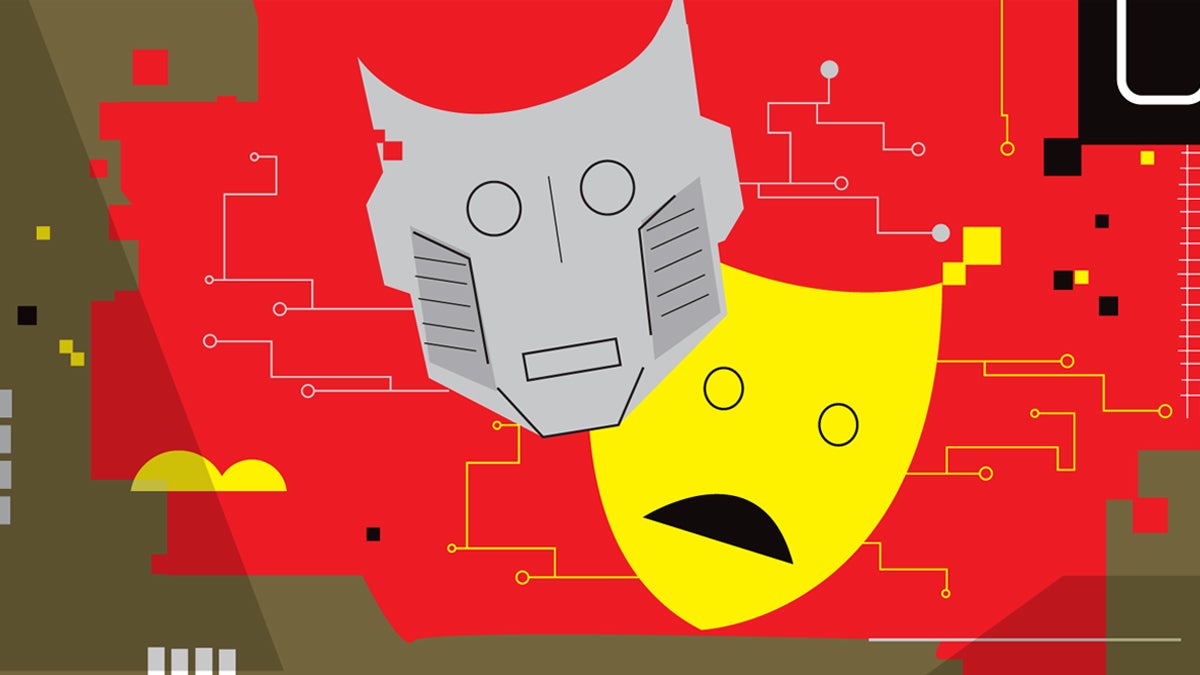
New technology is opening up possibilities like a virtual 007 or a “Casablanca” prequel, but old fights around mimicking actors’ likenesses could heat up again
Deceased actors have been brought back from the grave before: Carrie Fisher, Paul Walker, Peter Cushing and Harold Ramis, among others, have each been resurrected for the screen, with mixed results, thanks to old-fashioned CGI wizardry. But recent, startling advancements in artificial intelligence promise to deliver far more realistic results than ever before thought possible. According to the experts, the technology needed to create a totally believable deep fake 30-year-old Connery is just around the corner. All that’s required is the will to do so.
In Bond’s case, that’s not quite there yet.
“Um, no,” franchise producer Barbara Broccoli told TheWrap when asked if she’d ever consider casting an AI 007. “We won’t be doing that. Ever.”
Still, never say never. As AI continues to evolve at mind-bending speed, the technology is likely to upend all our notions of what actors can (and can’t) do, how they age (or don’t), and whether or not flesh-and-blood thespians will even be necessary to make movies in the not-so-distant future. It also promises to be a contentious issue in upcoming labor negotiations.
Where does the technology stands today in regard to acting? Where it’s headed tomorrow? And how could it change just about everything about the business for everyone from A-listers to extras?
AI’s already making waves
Right now, we’re only seeing glimpses of AI’s potential when it comes to acting.
One early use was in last year’s “Fall,” a film about two young social media influencers trapped atop a 2,000-foot radio tower, which was originally shot with an R rating. When Lionsgate decided, during post-production, to knock it down to PG-13, some 30 f-words had to be digitally replaced by less profane language. Luckily, director Scott Mann also happened to be a co-founder of Flawless, an AI startup developing the technology to seamlessly manipulate actors’ mouth movements in post-production. He was able to use AI to clean up the dialogue without audiences noticing a thing.
Removing f-bombs from films just scratches the surface of Flawless’ potential, according to Mann, who is aiming to use AI to open up huge new international movie markets by employing the technology to dub films in different languages in a way that make it seem as if the actors are speaking their native tongue.
“Dubbing is almost 100 years old and it’s a broken process,” Mann said. “Trying to fit the dialogue into mouth movements, the performance becomes completely different. It’s all out of sync and there’s no immersion. It ruins a film. But what if you could dub a film so that you still have the actor giving an authentic performance, with all subtlety and articulation of expression and all those elements that we spend our lives looking at as human beings. If you could do that, that changes everything. The idea is that if the whole world spoke one language, then that massively increases the potential audience for any film.”
Beyond mouth movements, AI is also currently able to give actors post-production makeovers in a fraction of the time that old CGI techniques required. Hollywood has been de-aging movie stars for a few decades now, with everyone from Brad Pitt to Kurt Russell miraculously shedding years on the screen, but the process was exorbitantly expensive and took weeks to turn around. Now, though, a Canadian company called MARZ (an acronym for Monsters Aliens Robots Zombies) has figured out a way to employ AI to perform plastic surgery on actors virtually in real time and for a lot less money. On Marvel’s “Ant-Man and the Wasp: Quantumania,” for instance, MARZ was able to turn around as many as five cosmetically enhanced shots a day.
And that may well be the most immediate impact of AI on Hollywood: driving down the cost and time required to digitally alter an actor’s face on screen.
Back in 2019, it cost Ang Lee $140 million to shoot “Gemini Man,” a good chunk of that budget going to the effects required to make Will Smith look 20 again. By the end of 2023, though, it’s entirely possible a “Gemini Man 2” could be shot with a direct-to-VOD-sized budget and look far more realistic than Smith’s doughy young doppelganger in Lee’s film.
Back to arguments about the future
Christopher Reeve once again flying across the screen as Superman? James Dean smoldering for the camera in “Rebel Without a Cause 2”? Humphrey Bogart bumming around Paris with Ilsa and Sam in a “Casablanca” prequel?
It’s all within the realm of the theoretically possible. Or at least it will be, if AI continues to develop as rapidly as it’s been evolving so far.
But it’s not just about bringing dead icons back to life. AI also has the potential to dramatically alter the way living actors view their professions, turning movie stars into deep fake avatars whose physical presences on soundstages would no longer be required.
“People are already starting to have those conversations,” said Ben Grossman, founder of Magnopus, an AI company that’s done effects for everything from “The Mandalorian” to “The Lion King.” “It’s conceivable that in the relative near future, you could have an actor like, say, Michelle Yeoh, and you train an AI on how she looks, how she acts, what she sounds like, and then give guardrails around what her performance should be — that’s what everyone is working towards.”
Well, not everyone. There are some in Hollywood who find the notion of an AI actor appalling.
“That sounds terrible,” said 90-year-old character actor Bruce Glover when TheWrap asked him about AI. “I consider my work as an actor to be art. Acting should be considered a living thing.”
Presumably, Glover’s son, Crispin, feels similarly; he once sued Universal over the use of his image in “Back to the Future Part II.” Back then, in 1990, the studio faked him the old-fashioned way, by using a face mold and applying makeup and prosthetics to make another actor look like George McFly. Universal reportedly settled the lawsuit, paying Glover $760,000.
“Studios won’t want to anger actors, but they will do as much as they can get away with,” noted tech attorney Kelsey Farish, who believes the potential of AI is limited only by how much stars will push back. Some already are. Keanu Reeves, for instance, has a clause in every one of his film contracts banning studios from digitally touching any of his performances. “Early on, in the early 2000s, or it might have been the ’90s, I had a performance changed,” he recently told Wired. “They added a tear to my face, and I was just like, ‘Huh?!’ It was like, I don’t even have to be here.”
The Screen Actors Guild has taken a firm stand. In March, it declared that “rights to digitally simulate a performer to create new performances must be bargained with the union” and warned employers and actors against trying to end-run the union in negotiating those rights. The guild hasn’t yet determined if further restrictions on AI rights will be part of its pattern of demands in upcoming talks, SAG-AFTRA negotiator Duncan Crabtree-Ireland recently told TheWrap.
Still, the wheels of progress may be impossible to stop. And some established actors may see a big economic incentive to play ball with their new AI overlords; James Earl Jones, for instance, recently sold the rights to his Darth Vader voice, for an undisclosed but undoubtedly hefty sum, to Respeecher, a Ukrainian tech company that uses AI to create new dialogue from actors who’ve either lost their voice or passed away. At 91, it was a savvy move for Jones, since his natural voice has changed considerably over the decades.
Less-established actors may face greater pressure to give in to AI. Up-and-comers, Farish noted, may “get so excited by the prospect for a given project that they will be willing to sign away digital rights.” Given the SAG’s vocal stance, this is likely to become a flashpoint in Hollywood labor talks. If the union doesn’t get its way, then giving up your face and voice may well become the price of admission into the Hollywood studio system.
This is Part Four of a series about AI and its impact on Hollywood. Keep reading WrapPRO for upcoming stories on AI and screenwriting, animation and production.
Read Part One: AI and the Rise of the Machines: Is Hollywood About to Be Overrun by Robots?
Read Part Two: How Hollywood’s Guilds Are Preparing for the Dangers — and Benefits — of AI
Read Part Three: This Story Was Not Written by a Robot: AI and the Future of News Media
- timewarnerent.comhttps://timewarnerent.com/author/gleberman1236/
- timewarnerent.comhttps://timewarnerent.com/author/gleberman1236/
- timewarnerent.comhttps://timewarnerent.com/author/gleberman1236/
- timewarnerent.comhttps://timewarnerent.com/author/gleberman1236/



















